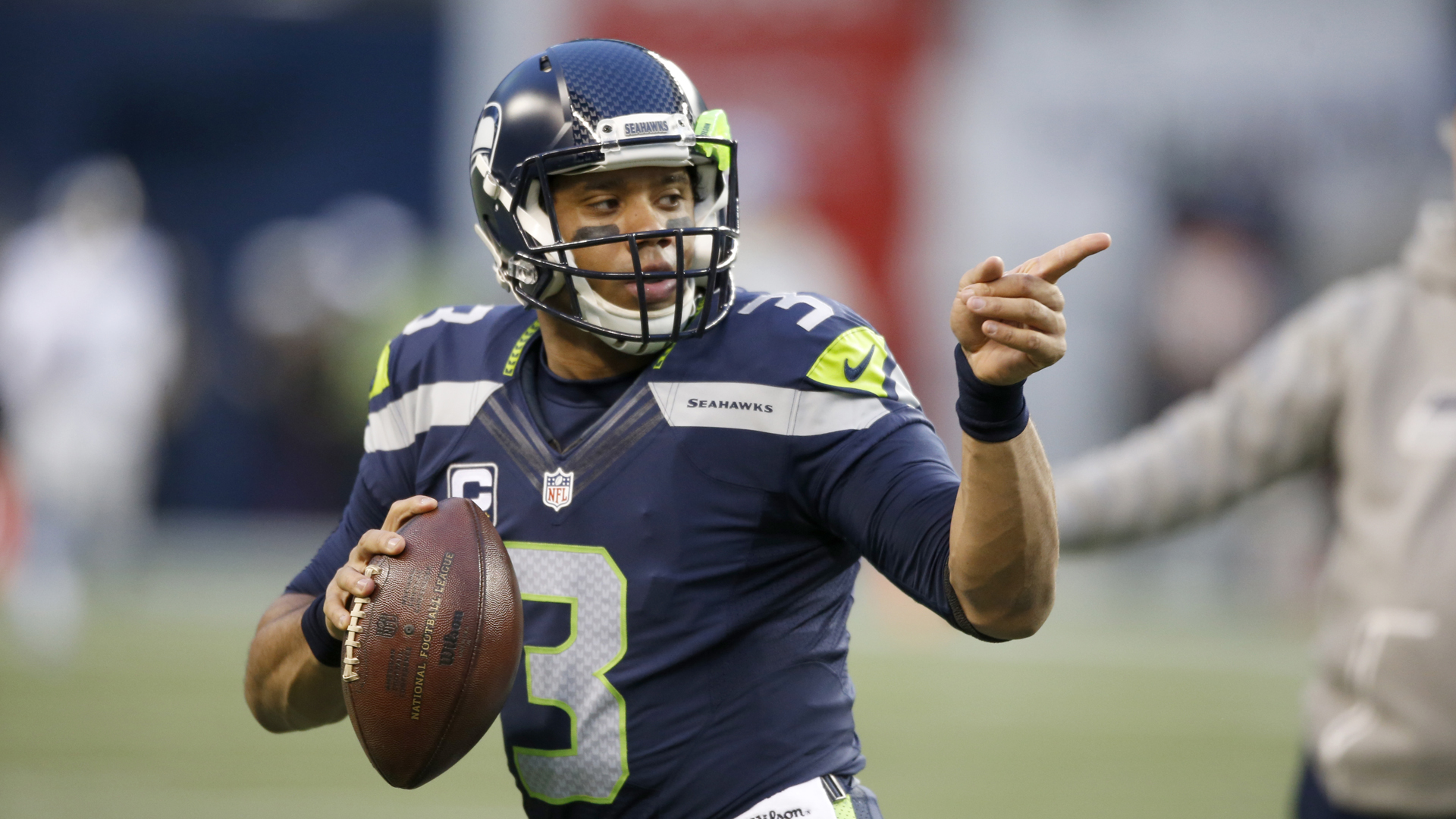What the New NFL Rights Deals Say About the Future of Sports on ‘TV’
It’s clear the big media companies, pushed by tech giant Amazon, are coming closer to the Big Kiss Off, ending one of the great love affairs in television history

Like the stoic protagonists in an Oscar-winning film, the NFL and traditional TV networks just can’t quit each other. But the league took its first big step toward moving on to a new love this past week, pocketing $10 billion over 10 years from Amazon as the league formally renewed rights on nearly all its TV packages through the early 2030s.
That Amazon deal, for 15 semi-exclusive Thursday games a year (local markets for each week’s contest will get a broadcast simulcast), seems an unlikely game changer, given the tiny percentage of contests involved. Nonetheless, analysts LightShed Partners called the deal “the end of the (multichannel TV) bundle as we know it.”
Yes, eventually. And maybe sooner than that, too.
In the meantime, the NFL will continue to extract every available nickel it can over the next 11 years from the declining audiences for traditional pay-TV and broadcast. It doesn’t take Nostradamus, however, to forecast that the value of those NFL deals will look considerably different in 2032 than they do now.
There are certainly good reasons for both sides to hang on as long as possible to what’s been a beautiful relationship over the past six decades. NFL games, led by the Super Bowl and playoffs, remain the most-watched programming on traditional TV.
Even amid the pandemic, which cancelled thousands of other sports leagues’ events and emptied NFL stadiums of fans, seven of the league’s games were among the 10 highest-rated shows of the year, and 28 of the top 100. That’s as surefire an audience attractor as remains in traditional broadcast and cable.
On the flip side, broadcast and cable networks remain the largest available audience for the NFL and the alcohol, truck, pizza and insurance companies that predominate among its advertisers. It’ll be a while before streaming can match the 102 million people who watched the 2020 Super Bowl on Fox.
NEXT TV NEWSLETTER
The smarter way to stay on top of the streaming and OTT industry. Sign up below.
So, there are good reasons for both sides to cling to each other for a while longer. But it’s clear a breakup is on the way. As in so many Hollywood marriages, money talks.
More importantly, it also walks.
In this case, the money is likely to walk right on over to the second-most popular “series” on linear TV, Thursday Night Football. Does that further spur a larger shift of marketing dollars, already evident last summer, to connected TVs?
All the renewed deals with ABC/ESPN, NBC, CBS, and Fox allow the networks to also stream games on their owned services, something ViacomCBS has done for years on Paramount Plus predecessor, CBS All Access.
Expect others to follow suit, providing advertisers and audiences yet another reason to walk to connected TV and away from the cable bundle. That should make Roku and Amazon Fire devices even more lucrative, and station groups even more miserable.
The move also may force other shifts like:
> More shoulder programming and perhaps some live games on AVOD services owned by Fox, Comcast, and ViacomCBS, as well as Amazon’s IMDb TV.
> Fox, whose only SVOD service now is the decidedly niche Fox Nation, may even layer a subscription tier on Tubi, a logical extension of brand that would get a serious boost if it also featured live NFL games. Given that Fox is still integrating Tubi into its strategies less than a year after closing the AVOD service’s acquisition, more changes seem likely.
> Disney, which will get a turn in the Super Bowl rotation with games run both ABC and ESPN, reportedly is toying with the idea of a “mega cast,” featuring multiple game ‘casts targeting different audience segments. ViacomCBS’ delightful experiments late this past season with a kid-friendly Nickelodeon simulcast suggest one direction those mega casts might take, with the potential to attract a much wider array of advertisers.
> Disney’s ESPN Plus may also get a boost, much needed for a rather anemic and overlooked service. Under the NFL deal, the SVOD service will be able to stream every game that airs on ESPN. That probably won’t happen soon, give the service’s equally anemic revenue generation (LightShed quotes an ARPU of just $4.48), and the revenues ESPN still extracts from the cable bundle.
> All the incumbent rights holders except the fading satellite provider DirecTV re-upped, at double previous amounts, and with those ancillary streaming rights. If traditional bundles fade ever more quickly, how will they hold up the deal as we edge toward the 2030s?
> What happens to NFL Sunday Ticket, which underpinned DirecTV popularity for more than two decades? A virtual bundle such as Alphabet-owned You Tube Live might want it, should yet another tech giant want to make a definitive statement about live, streamed video entertainment. It certainly would supercharge interest in what has been a waning, increasingly expensive sector.
Combine all these actual and likely impacts, it’s clear the shift to streaming could continue its pandemic-fueled velocity. LightShed suggested the NFL deal drops the “floor” on traditional pay-TV subscriptions from something like 50 million households to perhaps 20 million. That’s a plummet worthy of a carnival midway ride, and just as stomach churning.
Traditional TV bundles were already facing other challenges to some of their evergreen sources of viewership.
One is the substantial cyclical loss of hundreds of millions of dollars in ad revenues now that last year’s elections are turbulent history.
Coverage of debates, election night and town halls provided 11 of the top 100 shows in 2020,. Local election ad spending was an important buttress that helped keep station groups above water during the pandemic’s recession. Less clear is whether those viewers and ads return in four years, or head mostly online.
Awards shows, long a reliable viewer favorite, are also stumbling. Both the Grammy Awards and the Golden Globes had some of their worst ratings ever this winter, after coming in 11th and 12th respectively among all programming last year. Admittedly, those 2020 numbers likely were boosted because both events took place in the Before Times, just weeks before the pandemic hit the United States, and compared well against the rest of the year’s competition.
Goodness knows what the pandemic-delayed Oscars in April will do, after coming in eighth in ratings in late February last year. The show’s producers promise a unique broadcast, featuring only nominees, presenters and their immediate guests, all of whom will have to come in person, and mostly to appear in a train station in downtown Los Angeles.
The 2021 Oscar red carpet, traditionally something of a Super Bowl itself for fashion and jewelry designers that fed programming on multiple networks, likely will be even more diminished.. Whether that all continues after the pandemic, as more movies debut on streaming services (Netflix alone received 35 Oscar nominations last week), is yet another area of vulnerability.
It may just be another temporary pandemic victim, like attendance at DisneyWorld. Or this year’s ratings woes may presage the collapse of yet another leg of meaningful support for traditional broadcast and cable.
Regardless, it’s clear the big media companies, pushed by tech giant Amazon, are coming closer to the Big Kiss Off, ending one of the great love affairs in television history.
David Bloom of Words & Deeds Media is a Santa Monica, Calif.-based writer, podcaster, and consultant focused on the transformative collision of technology, media and entertainment. Bloom is a senior contributor to numerous publications, and producer/host of the Bloom in Tech podcast. He has taught digital media at USC School of Cinematic Arts, and guest lectures regularly at numerous other universities. Bloom formerly worked for Variety, Deadline, Red Herring, and the Los Angeles Daily News, among other publications; was VP of corporate communications at MGM; and was associate dean and chief communications officer at the USC Marshall School of Business. Bloom graduated with honors from the University of Missouri School of Journalism.

